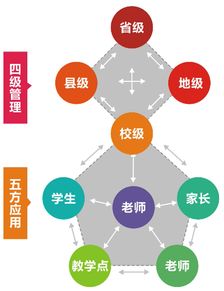超详细!英语四级语法知识点总结!
英语四级语法知识点有哪些呢?不知道的小伙伴来看看小编今天的分享吧!
1、主动形式

2、被动形式

CET-4 常考的三种时态:过去完成时;将来完成时;(现在/过去)完成进行时。
时间状语从句当中的时态:

3、不定式
不定式的常考形式:
一般形式:He decided to work harder in order to catch up with the others.
被动形式: He preferred to be assigned some heavier work to do.
语法功能: 表示与谓语动词同步发生
完成形式:He pretended not to have seen me.
被动形式:The book is said to have been translated into many languages.
语法功能:表示发生在谓语动词之前
不定式常考的考点:
不定式做定语----将要发生
不定式做状语----目的
不定式充当名词功能---To see is to believe.
不定式的省略:
感官动词 see, watch, observe, notice, look at, hear, listen to, smell, taste, feel
+ do 表示动作的完整性,真实性;
+ doing 表示动作的连续性,进行性
I saw him work in the garden yesterday.
昨天我看见他在花园里干活了。(强调我看见了这个事实)
I saw him working in the garden yesterday.
昨天我见他正在花园里干活。(强调我见他正干活这个动作)
感官动词后面接形容词而不是副词:The cake tastes good; It feels comfortable.
使役动词 have bid make let 等词后不定式要省略但同1)一样被动以后要还原to
I ‘d like to have John do it.
I have my package weighed.
Paul doesn’t have to be made to learn.
help help sb do help sb to do help do help to do

有些动词后只跟不定式如:
want,wish,hope,manage,promise,refuse,pretend,plan, offer,decide,agree,expect allow sb to do, cause sb to do , permit sb to do, enable sb to do
force sb to do. be more likely to do love to do warn sb to do be able to do
be ambitious to do. begin to do . start to do
有的时候to后面要接-ing形式
accustom (oneself) to; be accustomed to; face up to; in addition to; look forward to; object to; be reduced to; resign oneself to; be resigned to; resort to; sink to; be used to; be alternative to; be close/closeness to; be dedication/dedicated to; be opposition/opposed to; be similarity/similar to.
4、动名词:具有动作性特征的名词
是名词 seeing is believing
具有动词性特征可以带宾语 starving troops is necessary.
动名词的形式
一般形式:I don't like you smoking.
完成形式:I regret not having taken your advice.
被动形式:This question is far from being settled.
动名词常考的点
1、动名词做主语谓语动词为单数
2、在动名词和不定式中,做为介词的宾语是动名词
3、动名词的否定直接在其前加否定词,通过代词的宾格或所有格形式给出逻辑主语.
I would appreciate_______ back this afternoon.
A.you to call B.you call C.you calling D.you're calling(Key:C your calling 也对)
I regret not having taken your advice.
4、有些词后只能接动名词
admit; appreciate; avoid; celebrate; consider; contemplate; defer; delay; deny; detest; discontinue; dislike; dispute; enjoy; it entails; escape; excuse; explain; fancy; feel like; finish; forgive; can't help; hinder; imagine; it involves; keep; it means; mention; mind; miss; it necessitates; pardon; postpone; practice; prevent; recall; report; resent; resist; risk; suggest; understand...
另外还有一些接-ing形式的常用说法:
it's no good; it's no/little/hardly any/ use; it's not/hardly/scarcely use; it's worthwhile; spend money/time; there's no; there's no point in; there's nothing worse than; what's the use/point...
5、有些词后加不定式和动名词均可
remember, forget, try, stop, go on, cease, mean后面用不定式和-ing形式,意义截然不容。
I remembered to post the letters. (指未来/过去未来的动作)
I remembered posting/having posting the letters (我记得这个动作)
forgot与remember的用法类似。
I regret to inform you that… 我很遗憾地通知你…
I regretted having left the firm after twenty years. 为了二十年前的离开而遗憾。
try to 努力 You really must try to overcome your shyness.
try –ing 试验 Try practicing five hours a day.
I mean to go, but my father would not allow me to. [打算、想]我想去,但我父亲不让我去。
To raise wage means increasing purchasing power. [意味着]赠加工资意味着增加购买力。
prefer的用法:
我宁愿在这里等。
I prefer to wait here. (所以啊,你不介意的话,我就等下去。)
I prefer waiting here.(我正在这里等,我就喜欢这么做。)
I prefer swimming to cycling. (这个句子里面就不能用不定式了。)

5、分词:
现在分词主动进行,过去分词被动状态
现在分词的形式
1、一般式: Do you see the man talking to the dean(主任)? (与谓语动词同步发生)
2、完成形式:Not having made adequate preparations, they failed. (发生谓语动词之前)
3、完成被动形式:Having been adapted, the script seems perfect.( 发生谓语动词之前且表示被动)
过去分词
1、过去分词表示被动:Fight no battle unprepared.
2、过去分词的进行形式:You'll find the topic being discussed everywhere. (强调正在被做)
这三种非谓语动词,都可以构成复合结构,非谓语动词所修饰的成分是这些非谓语动词的逻辑主语。他们之间的一致关系——主动还是被动,往往就是考点。独立主格结构中,要注意的是分词与他前面的逻辑主语之间的主动被动的关系。
情态动词所表达的可能性程度:must/can't à should/shouldn't à might/may (not)
另外两个类情态词的形式:need/needn't; have to/don't have to
v 最自然的虚拟状态:由should/would+原型时态(不含时间只含状态)
本质上是过去将来时:即,时间固定在过去将来,状态不同:一般、进行、完成、完成进行。
这时虚拟语气的产生往往是因为我们要表达本来应该……(而现在却还没有……)
(本来可以……,本来能……)
I should go! (… but I'm still here!) (一般)
I should be working now! (进行)
I should have practiced more (than I did)! (完成)
我应该多多练习!(言下之意,现在我练习得不多。)
I shouldn't dream away my time too much! (完成的否定)
(actually I did dream away my time too much!)
It shouldn't have been leaking for such a long time! (完成进行)
I may/might/could have finished! (完成)
一些常见的句型中,就会出现这种虚拟语气,而处于从句之中,should 常常被省略掉
o suggest, advise, propose, recommend, plan;
o demand, order, direct, arrange, command, decide;
o require, request;
o think, expect, believe, insist, suspect.
由于他们的含义中包含建议,假设,应该这类的含义,所以,由他们引起的从句中,就会包含有should+原型时态构成的虚拟语气。
这些动词(以及他们的名次形式,分词形式)引起的从句还有其他的变形:
主语从句,表语从句,同位语从句
It's suggested that…
My suggestion is that…
The only suggestion that...
The only suggestion I can give you now is that…
一些形容词引起的表语从句中,也会有同样的情况

由lest, for fear that, in case 引起的从句中多使用should
v 表达与事实相反
与现在相反:使用[过去时]:
I wish I were not here! (一般现在à一般过去)
Suppose we were not here.
He loved me as if I were his own son. (一般现在à一般过去)
Hope I weren't always losing things! (现在进行à过去进行)
If only/If I hadn't been there! (现在完成à过去完成)
What if I hadn't been waiting right here! (现在完成进行à过去完成进行)
常考句型:It's (high) time (that)…; would rather (that)…
这两个从句,只能表达对现在的看法,所以,从句中只有一般过去时。
与过去相反:过去完成时;
How nice it is if I had past the test!
How nice it is if I had slept a little more this morning!
与将来相反?将来的事情没有发生,所以只能推测。
If it rains tomorrow, we'll have to stay one day more.
不过,由于可以用be to表示将来;所以,虚拟语气中经常出现were to;也是CET-4的常考语法点。
虚拟条件句
if 部分,做一个与事实相反的假设(所以只有一般过去和过去完成);
主句部分,这是表示基于这个假设的推测,一般使用情态动词would,少数情况下使用could/might/may。
注意:两个部分之间,是有逻辑关系,而在两部分的谓语动词时态上,没有必然的联系。
注意,虚拟条件句中的if可以省略,造成were/had提前,产生倒装。
隐含的非真实条件
What would you do with 50 thousand dollar?
How could I be happy without you?
除了条件状语从句之外,原因状语从句也会出现虚拟语气。
由in order that, so that引起的从句,肯定的时候可以使用may/might; can/could; 否定的时候,多用shouldn't;
whoever, whatever, no matter what引起的从句中,多用may+
以上就是小编今天的分享了,希望可以帮助到大家。

 2
2 
 2
2 
 2
2 
 2
2 
 2
2 
 3
3 
 2
2 
 2
2 
 2
2 
 2
2